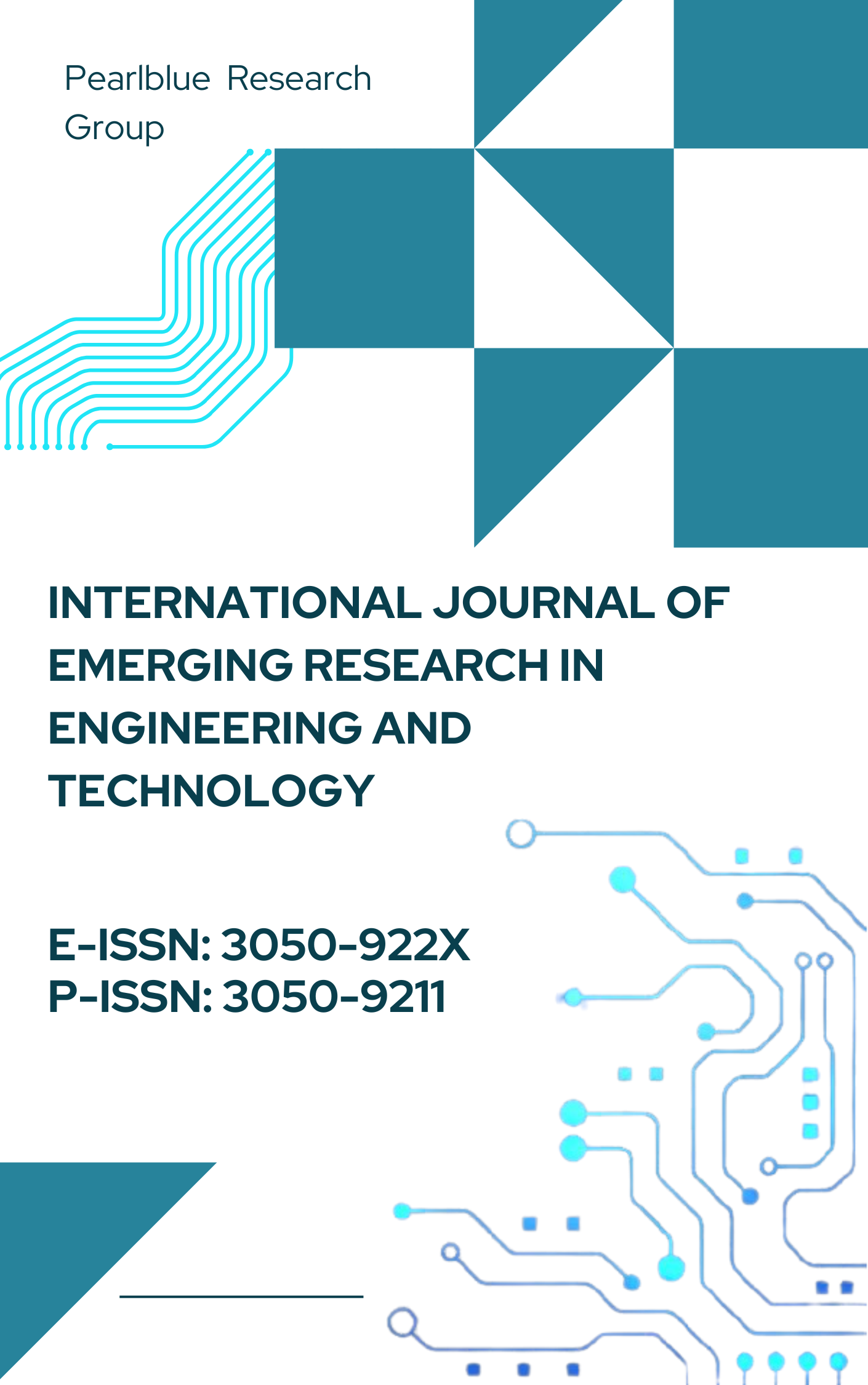Predictive Maintenance for Database Systems
DOI:
https://doi.org/10.63282/3050-922X.IJERET-V3I1P111Keywords:
Predictive maintenance, Database systems, AIOps, Anomaly detection, ObservabilityAbstract
Predictive maintenance (PdM) re-organizes the work of a database as a forecasting / decision problem: identify potential precursors of faults and performance failures that are weak, and then plan the minimal risk intervention before SLAs are violated. The paper suggests a framework, which clearly distinguishes sensing, learning, and control. The data layer merges the high-granularity telemetry query traces, percentiles of latency, lock/wait graphs, buffer and I/O counters, log growth, index health and hardware SMART signals into seasonality-encoded time-aligned feature store with change-point signals. The model layer is an integration of unsupervised anomaly detection (unsupervised), short-horizon sequence forecasting (unsupervised), supervised failure category classifiers (supervised), and survival analysis (remaining time to breach) models are calibrated and drift-observed and incident- and operator-supplied labeling data is used to train and run the models. The control layer maps risk to actions statistics refresh, index-targeted maintenance, plan pinning, throttling, file pre-growth, or storage rebalancing is performed subject to guardrail (confidence thresholds, rate limits, maintenance window, rollback) starts. The assessments of synthetic failures and TPC-like benchmarks have demonstrated previous warning level, increased alertness, and fewer emergency measures compared to calendar-based maintenance system and also a decline in unintended downtime and workforce. Privacy-preserving telemetry, explainability, auditability are all considerations of governance that are implemented to maintain operator trust. The framework is engine-agnostic (SQL/NoSQL, on-prem/cloud) and promotes a secure evolution of advisory insights to selective autonomy, growing database reliability out of reactive firefighting to proactive and constantly learning operations
References
[1] Esteban, A., Zafra, A., & Ventura, S. (2022). Data mining in predictive maintenance systems: A taxonomy and systematic review. Wiley Interdisciplinary Reviews: Data Mining and Knowledge Discovery, 12(5), e1471.
[2] Klees, M., & Evirgen, S. (2022). Building a smart database for predictive maintenance in already implemented manufacturing systems. Procedia Computer Science, 204, 14-21.
[3] Gadde, H. (2021). AI-driven predictive maintenance in relational database systems. International Journal of Machine Learning Research in Cybersecurity and Artificial Intelligence, 12(1), 386-409.
[4] Zhu, T., Ran, Y., Zhou, X., & Wen, Y. (2019). A survey of predictive maintenance: Systems, purposes and approaches. arXiv preprint arXiv:1912.07383.
[5] Lughofer, E., & Sayed-Mouchaweh, M. (2019). Predictive maintenance in dynamic systems. Cham, Switzerland: Springer International Publishing.
[6] Cachada, A., Barbosa, J., Leitño, P., Gcraldcs, C. A., Deusdado, L., Costa, J., ... & Romero, L. (2018, September). Maintenance 4.0: Intelligent and predictive maintenance system architecture. In 2018 IEEE 23rd international conference on emerging technologies and factory automation (ETFA) (Vol. 1, pp. 139-146). IEEE.
[7] Zhang, W., Yang, D., & Wang, H. (2019). Data-driven methods for predictive maintenance of industrial equipment: A survey. IEEE systems journal, 13(3), 2213-2227.
[8] Duarte, J. C., Cunha, P. F., & Craveiro, J. T. (2013). Maintenance database. Procedia CIRP, 7, 551-556.
[9] Jain, S., & Alam, M. A. (2017). Comparative Study of Traditional Database and Cloud Computing Database. International Journal of Advanced Research in Computer Science, 8(2).
[10] Levitt, J. (2003). Complete guide to preventive and predictive maintenance. Industrial Press Inc..
[11] Ciocoiu, L., Siemieniuch, C. E., & Hubbard, E. M. (2017). From preventative to predictive maintenance: The organisational challenge. Proceedings of the Institution of Mechanical Engineers, Part F: Journal of Rail and Rapid Transit, 231(10), 1174-1185.
[12] Xu, Z., & Saleh, J. H. (2021). Machine learning for reliability engineering and safety applications: Review of current status and future opportunities. Reliability Engineering & System Safety, 211, 107530.
[13] Christou, I. T., Kefalakis, N., Zalonis, A., Soldatos, J., & Bröchler, R. (2020). End-to-end industrial IoT platform for actionable predictive maintenance. IFAC-PapersOnLine, 53(3), 173-178.
[14] Sahba, R., Radfar, R., Ghatari, A. R., & Ebrahimi, A. P. (2021). Development of Industry 4.0 predictive maintenance architecture for broadcasting chain. Advanced Engineering Informatics, 49, 101324.
[15] Alcorta, E. S., & Gerstlauer, A. (2021, August). Learning-based workload phase classification and prediction using performance monitoring counters. In 2021 ACM/IEEE 3rd Workshop on Machine Learning for CAD (MLCAD) (pp. 1-6). IEEE.
[16] Sánchez-Fernández, A., Baldan, F. J., Sainz-Palmero, G. I., Benitez, J. M., & Fuente, M. J. (2018). Fault detection based on time series modeling and multivariate statistical process control. Chemometrics and Intelligent Laboratory Systems, 182, 57-69.
[17] Hao, Y., Qin, X., Chen, Y., Li, Y., Sun, X., Tao, Y., ... & Du, X. (2021, April). Ts-benchmark: A benchmark for time series databases. In 2021 IEEE 37th International Conference on Data Engineering (ICDE) (pp. 588-599). IEEE.
[18] Opiyo, E. Z. (2015, November). Data analytics pipeline for prediction and decision making in complex products and systems development. In ASME International Mechanical Engineering Congress and Exposition (Vol. 57540, p. V011T14A045). American Society of Mechanical Engineers.
[19] Dittrich, K. R., Gotthard, W., & Lockemann, P. C. (2005, May). DAMOKLES—A database system for software engineering environments. In Advanced Programming Environments: Proceedings of an International Workshop Trondheim, Norway, June 16–18, 1986 (pp. 353-371). Berlin, Heidelberg: Springer Berlin Heidelberg.
[20] Selçuk, Ş. Y., Ünal, P., Albayrak, Ö., & Jomâa, M. (2021). A workflow for synthetic data generation and predictive maintenance for vibration data. Information, 12(10), 386.



